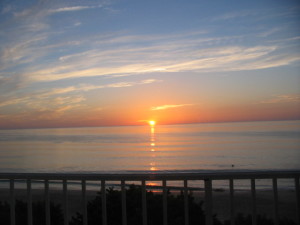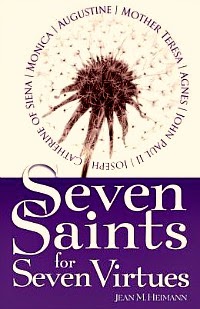From the President’s Desk – Inspiration and the Catholic Writer
Image by Ellen Gable Hrkach 2015
I also find inspiration in simple things. Years ago, I watched a tiny hummingbird hover near our kitchen window, his little wings flapping so quickly that I could barely see them. I was mesmerized by this little creature’s simple beauty, and it inspired me to write an entire storyline involving a hummingbird in my novel, A Subtle Grace.
Last week, I was frantically trying to finish several writing deadlines, focusing on the monitor in front of me. My office happens to be in a corner of our bedroom, near the window to our backyard. It was about 7:00 a.m. and my boys had just gotten on the school bus. We live in the country, thick forests on both sides of our house and a large field behind our yard. Suddenly, out of the corner of my eye, I could see movement beyond the window. Looking up, I was surprised to see a beautiful young deer grazing on the grass just beyond the window. I calmly stood up and went to get my iPad to take a photo. I took a few photos, but I watched her and marveled at her beauty. All of a sudden, she stopped munching and looked up in my direction. I stared at her as she stared at me. For the next half-hour, I watched her graze and move about our yard with no fear. I had a bazillion deadlines to meet, but I decided that it was more important to marvel in the beauty of God’s creation than to sit at a computer and work on my deadlines. And, you guessed it, it has sparked inspiration for a scene in one of my works in progress.
Where do you find inspiration? Please feel free to comment below.
Upcoming Events:
Catholic Writers Conference Live July 22-24, 2015, Somerset, New Jersey, to be held in conjunction with the Catholic Marketing Network Trade Show. Great speakers, wonderful fellowship and Mass, adoration and confession every day. Register here at this link: Catholic Writers Conference Registration 2015
The Catholic Writers Retreat is taking place in late October. Your Word is My Delight takes place October 25-29, 2015 at the St. Francis Retreat Center, 703 E. Main Street, DeWitt, Michigan 48820. Register online here at this link or call 866-669-8321. $490 for five days.
Image copyright Ellen Hrkach
As always, if you have any questions, comments or concerns, please don’t hesitate to contact me: president (at) catholicwritersguild (dot) (com)
In Jesus and Mary,
Ellen Gable Hrkach
President, Catholic Writers Guild








